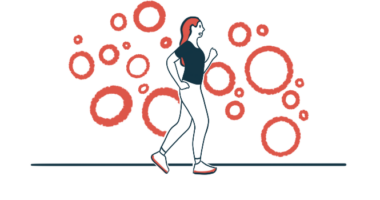A bad fall at home, and my worst fear realized, part 2
Getting back to baseline will prove daunting with my FA progression

Last in a series. Read part one.
After a traumatic whirlwind of a day, a sleepless night, and surgery to repair my broken hip, I woke up in the postoperative room. That’s always disorienting because you have no clue how much time has passed, how the surgery went, what the prognosis is, or even what time it is. Add in the muddying effect of coming out of anesthesia, and it makes for one of the strangest experiences.
All I remember is being told the surgery went well and that I’d be brought to my room once the anesthesia was “out of my system.” I recall the fluorescent tube lights overhead as I went down the hall, the hum of the elevator, and more lights as I was wheeled into my room, where my husband, Kyle, was waiting for me.
I grabbed his hand and quickly fell back asleep. When I woke up, Kyle told me the procedure was a “beautiful success” and took about 25 minutes. I now have three new screws in my body to go with the two plates and 13 screws from my ankle repair in 2018.
I was then informed that physical therapy would start that afternoon to “get things moving and stand me up.” I was confused, intimidated, overwhelmed, and terrified. Anyone in my family will tell you my pain tolerance is extremely high. On the typical 1-10 scale, my 4 is most people’s 10. When the nurse asked me to rate my pain, I quickly replied 10.
After a quick, pre-lunch visit from my kids, who were staying with my parents, I began to steel myself for physical therapy.
I don’t know what the future holds
Physical therapy is daunting for people with Friedreich’s ataxia (FA). The goal is to get you moving and get you back to baseline, but my baseline is so different from the average fracture repair.
After I was situated upright (which was excruciating), a gait belt was secured around my waist and a walker was set in front of me, my task was to stand and make my way to the recliner, a mere eight steps away.
When I made it to the chair, I finally had the breakdown everyone was bracing for. I told Kyle, “This is the end of any illusion I had of functioning independently. I don’t think I will ever be able to walk, transfer, or even stand without adult assistance again, let alone cook, drive, bathe, or help around the house.” I felt incredibly deflated.
After my pity party, a spaghetti lunch, and another visit from my family, the physical therapist returned to help me get back into bed. I was the model patient, listening to everything they said, determined to showcase my strength and resilience.
I was discharged the next day, Sept. 8, with a prescription for at-home physical therapy. My birthday was the next day and, with all of the flowers, presents, treats, and gifts, I felt encouraged to tackle my first session.
My fall happened just over a month ago and I can confidently say this injury is unlike anything I’ve ever experienced. Two things are loudly evident: One, modern medicine is a miracle; two, I have no idea what my future holds.
Before the fall, I was walking at home 95% of the time, fully aware those days were numbered. Now, I walk pain-free with my walker for a few steps to transfer, or during physical therapy. My goal is to get back to walking around the house, but I don’t want to be unsafe, so we’ll see.
Amid all of the uncertainty, I do stand firm in this: My future is in God’s hands. I can take heart, because my God is with me during my trials, working everything together for good, according to his plans for my life. “And we know that in all things God works for the good of those who love him, who have been called according to his purpose.” (Romans 8:28)
And: “I have told you all this so that you may have peace in me. Here on earth you will have many trials and sorrows. But take heart, because I have overcome the world.” (John 16:33)
Note: Friedreich’s Ataxia News is strictly a news and information website about the disease. It does not provide medical advice, diagnosis, or treatment. This content is not intended to be a substitute for professional medical advice, diagnosis, or treatment. Always seek the advice of your physician or another qualified health provider with any questions you may have regarding a medical condition. Never disregard professional medical advice or delay in seeking it because of something you have read on this website. The opinions expressed in this column are not those of Friedreich’s Ataxia News or its parent company, Bionews, and are intended to spark discussion about issues pertaining to Friedreich’s ataxia.








Bailey Deal
I am going through something similar, just my right shoulder and minus all the plates and pins, and my surgery was a February 10, 2025. I've had my faith tested. I feel extremely bad I doubted God and His plan for me for a while. I'm running into the same issue: it's difficult to do things like dressing and bathing alone. I'm not married and I live with my parents. My mom has been a Godsend with helping me. I'm just trying to stay positive and trust God.